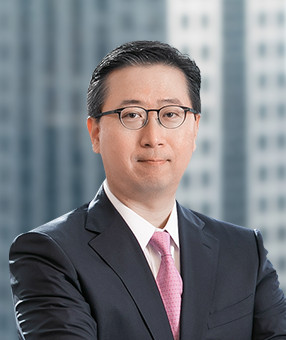The first two court decisions on violations of the Serious Accidents Punishment Act (the “SAPA”) were rendered in April 2023, 14 months after the enforcement of the SAPA.
In the first court decision related to a SAPA violation (Uijeongbu District Court, Goyang Branch Decision, 2022GoDan3254) (hereby referred to as the “First Decision”), the court imposed a suspended prison sentence on the representative director of the defendant company, who was deemed as the person responsible for its management. On the other hand, in the second related court decision (Changwon District Court, Masan Branch Decision, 2022GoHap95) (the “Second Decision”), the representative director of the defendant company was sentenced to imprisonment and taken into custody. The two aforementioned cases demonstrate a significant difference in terms of sentencing.
Given the lack of court precedents and sentencing guidelines applicable to SAPA violations, these court decisions and other upcoming court decisions regarding the SAPA are expected to have an impact on how courts determine defendants’ guilt/innocence and issue appropriate sentencings.
1. Key Details
-
The First Decision concerns a case in which a construction company contracted a part of its construction work to a subcontractor. In this case, an employee of the subcontractor fell from a certain height into an opening while working on-site without wearing a safety harness and died. The court sentenced the representative director of the construction company in question to 18 months (with a three-year probation) for violations of the SAPA (death by serious industrial accident), and imposed a criminal fine of KRW 30 million on the subcontractor for violating the SAPA (death by serious industrial accident) and the Occupational Safety and Health Act (the “OSHA”).
-
Meanwhile, in the Second Decision, a steel manufacturer outsourced part of its facility repair work to a subcontractor. An employee of the subcontractor was killed in a collision with a heat sink (weighing 1.2 tons) at a steel manufacturing plant. The representative director of the steel manufacturer was indicted on charges of violating the SAPA (death by serious industrial accident) and the OSHA, and of occupational negligence resulting in death and was sentenced to one year in prison. The court also imposed a criminal fine of KRW 100 million to the principal steel manufacturer for violations of the SAPA (death by serious industrial accident) and OSHA.
-
For reference, while the Prosecutors’ Office sought two years of imprisonment for the representative director and a criminal fine of KRW 150 million on the defendant company in both cases, there was a significant difference in the courts’ actual sentencing in the two cases.
2. Factors Considered in Sentencing
-
Based on the court decisions introduced above, in both cases the following were presented as favorable sentencing factors: (i) the defendant’s remorse, (ii) the victim’s unsafe behavior and industry practice, (iii) settlement with the bereaved family, (iv) the bereaved family’s petition for non-punishment or leniency, and (v) measures taken by the defendant to improve safety after the accident. However, the two cases are distinguishable due to the following factors. In the First Decision, the defendants had no criminal history or no history of criminal fines imposed for unrelated violations. By contrast, the responsible management personnel of the defendant company in the Second Decision had been repeatedly penalized for violating the occupational duty to take safety measures on several occasions and punished for a fatal accident during the grace period for the enforcement of the SAPA. It appears that this difference ultimately resulted in a more severe sentence in the Second Decision.
-
Moreover, in the Second Decision, the Supreme Court noted that “there seems to be a structural problem that threatens the safety rights of relevant workers.” It can be inferred that (i) if the same type of accident occurred during the term of office of the responsible management personnel or, (ii) if multiple cases in which violations of the obligation to take safety measures were identified during inspection by relevant government authorities (even if no accident occurred), the responsible management personnel is more likely to be subject to severe punishment. Therefore, in places of business where accidents frequently occur, it is crucial to make every effort to ensure the safety and health of workers in accordance with the SAPA.
3. Implications
-
Considering that the Prosecutors’ Office sought imprisonment and that the courts actually imposed a prison sentence in both cases (although one was suspended), it is likely that responsible management personnel will be sentenced to imprisonment rather than receive a fine in future cases. In particular, we observed that an actual prison sentence can be also imposed, depending on the existence of prior criminal history for the same type of violations.
-
In both cases, the courts rendered their decisions based on the premise of the so-called “multi-level causation,” which connects a violation of the obligation to ensure safety and health under the SAPA with a violation of the obligation to take safety measures under the OSHA, and deemed violations of the SAPA, OSHA, and the Korean Criminal Code (death/injury by occupational negligence) to be “crimes of conceptual concurrence.” We expect to see this line of interpretation in subsequent court decisions regarding the determination of causation and the number of crimes committed.
For reference, as the defendants in both cases did not contest the crimes alleged in their respective indictment, the courts did not engage in interpreting the meaning of “responsible management personnel” or the obligation to secure safety and health in accordance with the SAPA. Therefore, it will be interesting to see how courts decide in other cases where defendants actively contest these issues. Moreover, considering that both decisions are from district courts, and that the defendant of the Second Decision has appealed the Second Decision, it is worth following up on the High Court’s decision regarding the appeal.







